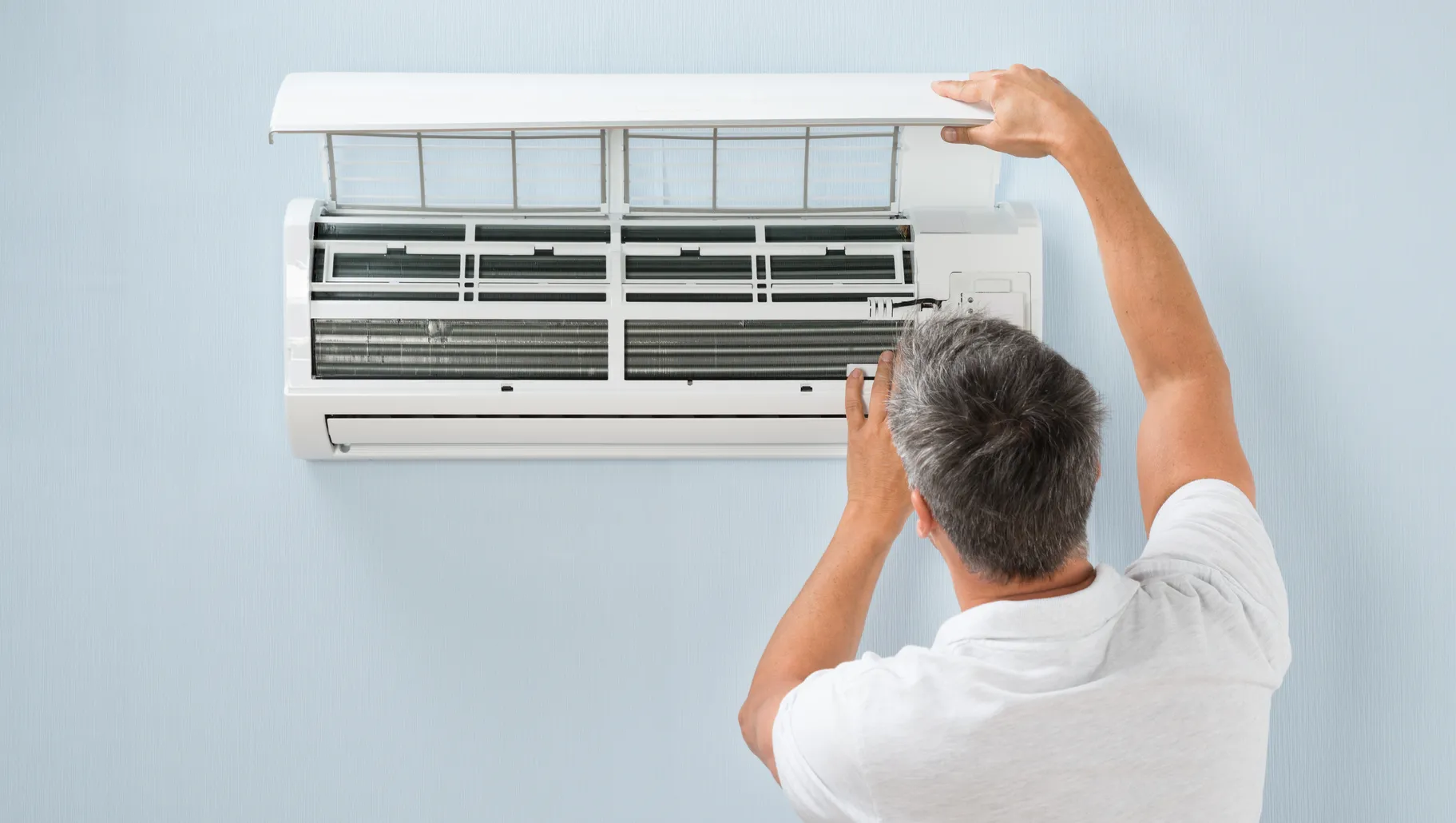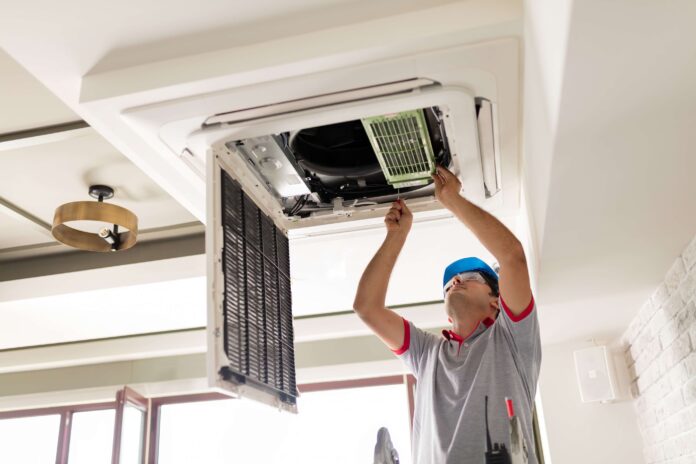If you want to save money on your utility bills and improve the air quality in your home, a whole-house mechanical ventilation heat recovery system can help. A Whole House Heat Recovery System unit is a great way to keep your home comfortable while reducing energy usage.
Air Conditioning
Air conditioning is the process of removing heat from a space. There are two types of air conditioning systems: refrigeration and air movement. Refrigeration uses a compressor to compress gas, which is cooled by an electrical motor. The cooled gas then passes through tubes in your home’s walls and ceiling, transferring its heat to those surfaces before being expelled outside of your home through vents in the attic or basement (depending on where you live).
Air movement systems do not use electricity
But instead rely on fans to distribute cool air throughout your house through vents located near windows, doors and other openings into rooms with high levels of activity such as kitchens or living rooms so everyone feels comfortable at all times during hot summer months–even if they’re not directly next door!
Heating
You can use a heat recovery ventilation unit to reduce your heating bill by up to 10%. This is because the fan in a heat recovery ventilation system pulls hot air out of your home, which helps keep it cool.
The savings from using these Mechanical Ventilation Heat Recovery Systems have been proven in studies conducted by researchers at the Lawrence Berkeley National Laboratory and several other universities. One study showed that homes with HVAC systems that included HRVs saved about $50 per year on their cooling bills compared to homes without them–and an average of $30 per year on their heating costs!
Heat Exchange Ventilation System with Humidification
Humidification is the process of adding moisture to the air. Moisture helps with allergies, asthma and dry skin. Heat Exchange Ventilation System can also help alleviate symptoms of these conditions by increasing comfort in your home.
Humidifiers are one way to add moisture into your home’s HVAC system, but there are other ways as well: you could use a humidifier or dehumidifier in conjunction with heat recovery ventilation (HRV) equipment that captures and recycles heat from exhaust air from your home’s bathrooms and kitchens by using an energy-efficient motorized fan assembly that pulls stale indoor air out through vents located near windows or doors on opposite sides of each room; then pushes fresh outside air into those same areas where stale indoor air was removed so it mixes together before being released back into living spaces throughout entire houses.*
Whole house heat recovery ventilation systems are a great way to save energy.
Whole house heat recovery ventilation systems are a great way to save energy. The Heat Recovery And Ventilation System can save up to 10% on your annual operating cost, reduce CO2 emissions by up to 80%, and improve indoor air quality. In addition, they’re an excellent investment for your home.
 What is a Home Heat Recovery System?
What is a Home Heat Recovery System?
A whole-house heat recovery ventilation system is a mechanical ventilation heat recovery system. It uses the waste heat from your air conditioning system to heat or cool your home, saving you up to 10% on your annual operating cost.
Whole-house ventilation systems have been around for decades and have become increasingly popular in recent years as energy costs continue to rise. There are several types of whole house ventilation systems available on the market today, but all share one thing in common: the Home Heat Recovery System use hot air from an existing forced air heating or cooling system (or both) as part of their operation process.
How does it save energy?
The heat recovery ventilator is designed to transfer heat from one side of the heat exchanger to another. The air stream is passed through a series of tubes that are filled with water, which absorbs this heat and transfers it to your home’s conditioned space.
The simplest models have just two sides–one cold side and one hot side–but more advanced HRVs have three or four sides: one for each room where you want to recover or supply fresh air, plus an optional outdoor intake/exhaust option. Some even have an extra “recycle” feature so you can use them as dehumidifiers in summer months when humidity levels are high (and therefore cooling costs are higher).
What are the benefits of having a whole-house heat recovery ventilation system?
A whole-house heat recovery ventilation system can help you reduce energy costs by up to 40 percent, increase indoor air quality and reduce noise levels. It also reduces dust and allergens in your home.
The Heat Recovery And Ventilation System works by taking warm air from the exhaust side of your HVAC unit and transferring it into the supply side of your furnace or AC unit. This saves money because it requires less electricity for heating or cooling purposes than standard systems do.
A whole-house heat recovery ventilation system can be an excellent investment for your home.
A whole-house heat recovery ventilation system can be an excellent investment for your home. It can help you cut CO2 emissions and improve indoor air quality, which means you’ll save money on your utility bills. Best of all, it’s easy to install!
Heat Recovery And Ventilation System uses a heat exchanger to recover the waste heat from the air being exhausted from your house.
A whole-house heat recovery ventilation system is a mechanical device that uses a heat exchanger to recover the waste heat from the air being exhausted from your house. It then uses this recovered energy to preheat incoming fresh air, reducing your energy consumption by up to 50%.
A typical HVAC Heat Recovery And Ventilation System includes an outdoor unit, which houses all of the fans and compressors needed to keep you warm or cool. When it’s time for your furnace or AC unit to kick on, these components begin working together in sequence: The blower motor pushes air through ductwork into rooms throughout your home; this cools or heats them as necessary.*
The process can be quite wasteful
Especially if you live in an area where temperatures fluctuate wildly throughout the year.* For example, when winter comes around and temperatures drop below freezing outside (and sometimes even above), most people will turn up their thermostats–without realizing how much additional electricity they’re using just because their homes are cold!
The HVAC system’s hot and cold air streams are passed through the heat exchanger.
The HVAC system’s hot and cold air streams are passed through the heat exchanger. The heat exchanger is filled with a special liquid that absorbs the heat from the air stream and then circulates through a heat pump, where it is heated and then cooled. This process can be repeated many times over until all of your home’s heating or cooling needs are met. Once all of your home’s heating or cooling needs have been met, any excess energy will be rerouted back into your utility grid for use by other people who may need it more than you do (or vice versa).
This Home Heat Recovery Ventilation System allows you to use less energy for heating or cooling your home.
The most important thing to understand is that a heat recovery ventilation system allows you to use less energy for heating or cooling your home. That’s because Home Heat Recovery Ventilation System reduces the amount of heat exchange needed between the inside and outside air. This can save up to 10% on annual operating costs and reduce CO2 emissions by up to 80%.
This reduction in energy consumption also makes for better indoor air quality, which can lead to healthier individuals who feel more comfortable at home.
The mechanical ventilation heat recovery system can impact your energy costs.
If you’re looking to save energy, the mechanical ventilation heat recovery system can impact your costs. The cost of installation depends on several factors, including the size and type of your home. In addition to installation costs, there are also operating costs associated with using a whole-house heat recovery ventilation system. These include electricity usage and filter replacement expenses (which may vary depending on what type of filter is used).
Costs related to maintenance and repair vary depending on the age of your unit as well as any potential damage caused by wear and tear over time. If something breaks down in one part of an older unit–such as an air exchanger–it’s likely that another part will need replacing soon afterward due to wear from use over time; this could result in higher repair bills compared with newer models whose components aren’t as worn out yet.*
A whole-house mechanical ventilation heat recovery system can save up to 10% on your annual operating cost.
A whole-house mechanical ventilation heat recovery system can save up to 10% on your annual operating cost. The system captures the waste heat from the air being exhausted from your house, and then uses that to preheat fresh air coming into your home.
The HVAC system’s hot and cold air streams are passed through the heat exchanger, which allows them to exchange thermal energy so that both streams are warm when they reach their respective destinations (your house or outside). The result is less use of electricity during winter months by heating only one set of pipes instead of two–a big benefit for those who have solar panels installed!
Mechanical Heat Recovery Unit can also cut CO2 emissions by up to 80%.
A heat recovery ventilation system can also cut CO2 emissions by up to 80%. This Mechanical Heat Recovery Unit is because it reduces the amount of energy needed to cool your home, which in turn reduces the amount of CO2 produced. The more you use a HRV system, the more money you’ll be able to save on your utility bills.
HRVs are also great at improving indoor air quality. When they’re installed correctly and maintained regularly by a certified ventilation specialist, they can remove allergens from the air and make breathing easier for those who suffer from asthma or other respiratory conditions. They also reduce mold spores in homes with humidifiers or dehumidifiers because they provide constant fresh air circulation throughout each room instead of just blowing hot or cool air into one spot while letting others sit stagnant all day long!
Whole-house Heat Recovery Ventilation Unit will reduce your utility bills while offering better indoor air quality too!
As you can see, a whole-house heat recovery ventilation system is an excellent choice for any home. It will reduce your utility bills while offering better indoor air quality too!
Whole-house Heat Recovery Ventilation Unit is designed to work with existing ductwork and registers. They’re easy to install and require no maintenance or cleaning. And since they’re so efficient at transferring heat from one place to another, they reduce CO2 emissions by up to 65% compared with conventional systems–and that means less pollution in the environment!
Conclusion
Whole-house heat recovery ventilation systems are a great way to save energy. They can help reduce your utility bills while offering better indoor air quality too!
Related Websites
Articles on Blogshunt
Articles on Blogseu
Articles on Blogspeoples
Articles on Thebigblogtheory
Articles on Allcityforums

